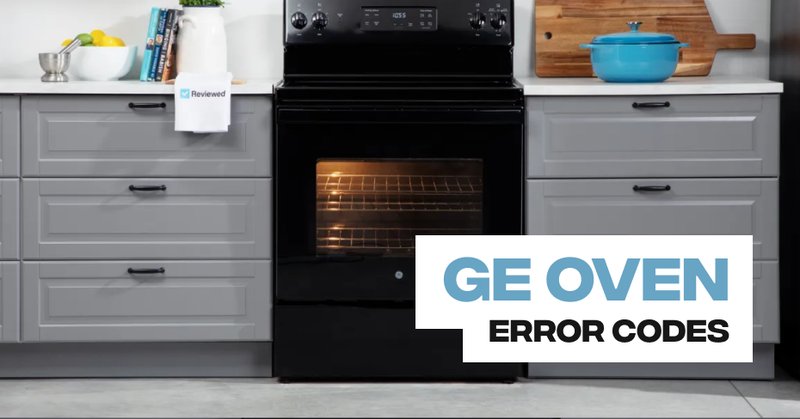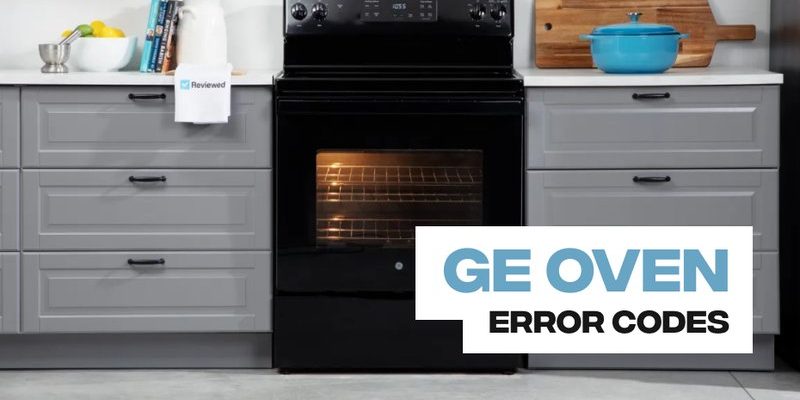
The “F2” error code on GE ovens and ranges typically signals a problem with the oven’s temperature sensor or indicates that the oven is overheating. Think of it like your oven’s way of saying, “Hey, something’s not quite right here!” This alert is a safety measure to prevent further damage to your oven or, worse yet, a potential kitchen hazard. Understanding what triggers this code and taking measured steps to prevent it can save you time and money while ensuring your meals are always cooked to perfection.
Understanding the F2 Error Code
So, what’s really happening when your oven displays the F2 error code? Well, this error usually means that the oven’s internal temperature has exceeded safe limits. Imagine if your car’s engine overheated; the check engine light would come on, warning you to take action. Similarly, the F2 error prompts a response to address an overheating issue or a fault with the temperature sensor.
The temperature sensor, often referred to as the oven’s “thermometer,” might be faulty or misaligned. It ensures that your oven maintains the temperature you set, much like a thermostat in your home. If it’s not functioning correctly, the oven might think it’s much hotter than it actually is, triggering that F2 code. Another possibility is that the oven’s cooling fan isn’t working properly, leading to genuine overheating.
If either the sensor or the fan is the culprit, continuous use without addressing these issues could lead to further damage, similar to ignoring a small leak in a pipe, which could eventually lead to a flood. So, it’s vital to pay attention and take action if you see this warning.
Regular Maintenance and Inspection
Preventing the F2 error from occurring starts with regular maintenance, just like you’d maintain a car to ensure it runs smoothly. One of the first steps you can take is to routinely check and clean your oven. Dust and grease can accumulate over time, which can impact how efficiently your oven functions. Cleaning the interior surfaces, including the racks and door seals, not only helps your oven look its best but also ensures it operates properly.
Next, it’s essential to regularly inspect the temperature sensor and the fan. You don’t have to be a professional to do a basic check. First, make sure the oven is turned off and completely cool. Then, look inside to see if the sensor is visibly damaged or misaligned. If you’re comfortable, you might gently move the sensor to ensure it’s secure but avoid any excess force.
For the fan, you can listen for unusual sounds when the oven is in use or check for obstructions that might prevent it from turning. A fan that isn’t working can be like a blocked air conditioner vent, leading to overheating. If anything seems off, or you hear grinding noises, it might be time to consult with a professional technician for a more in-depth inspection.
Proper Usage and Temperature Management
Using your oven properly can significantly reduce the likelihood of encountering the F2 error. Always preheat your oven to the desired temperature before placing food inside. This might seem trivial, but it helps the oven reach stability without overextending its heating elements, much like doing a warm-up before exercise to prevent injury.
Avoid opening the oven door too often during cooking, as this can cause the oven to overwork to maintain the set temperature, akin to repeatedly opening your refrigerator and making it run harder to stay cold. Keeping the door closed as much as possible ensures consistent temperature control and prevents unnecessary strain on the oven’s components.
Additionally, consider using an oven thermometer to verify the temperature inside. Sometimes the oven’s internal sensor might be slightly off, leading to inaccuracies. An external thermometer acts as a double-check, ensuring your oven doesn’t overheat and trip that F2 error code inadvertently.
When to Call in the Experts
Sometimes, despite our best efforts, the F2 error might still appear. This is when calling in a professional is a smart move. Just like your car needs a trained mechanic for complex issues, your oven deserves the same level of expertise for intricate repairs.
A certified appliance technician can perform comprehensive diagnostics to pinpoint the exact problem. They have the tools and knowledge to replace faulty components like the temperature sensor or the fan motor if needed. Attempting these repairs yourself without proper experience could lead to further issues or even void your warranty.
Professionals can also offer valuable advice on how to properly care for and maintain your oven, extending its life and improving its performance. It’s always better to seek help before a minor issue becomes a major headache.
Preventing the GE oven and range error code F2 from dampening your cooking experience requires a mix of vigilance and regular care. By understanding what this error means and taking proactive steps to maintain and use your oven correctly, you can minimize the chances of it appearing again. Regular cleanings, careful inspections, and proper usage techniques are your first line of defense.
If ever in doubt, don’t hesitate to consult with professionals who can ensure your oven is in tip-top shape. After all, a well-functioning oven is key to a happy kitchen and delightful cooking experiences. Keep these tips in mind, and you’ll be well-equipped to handle any future issues, enjoying peace of mind and perfectly cooked meals.
